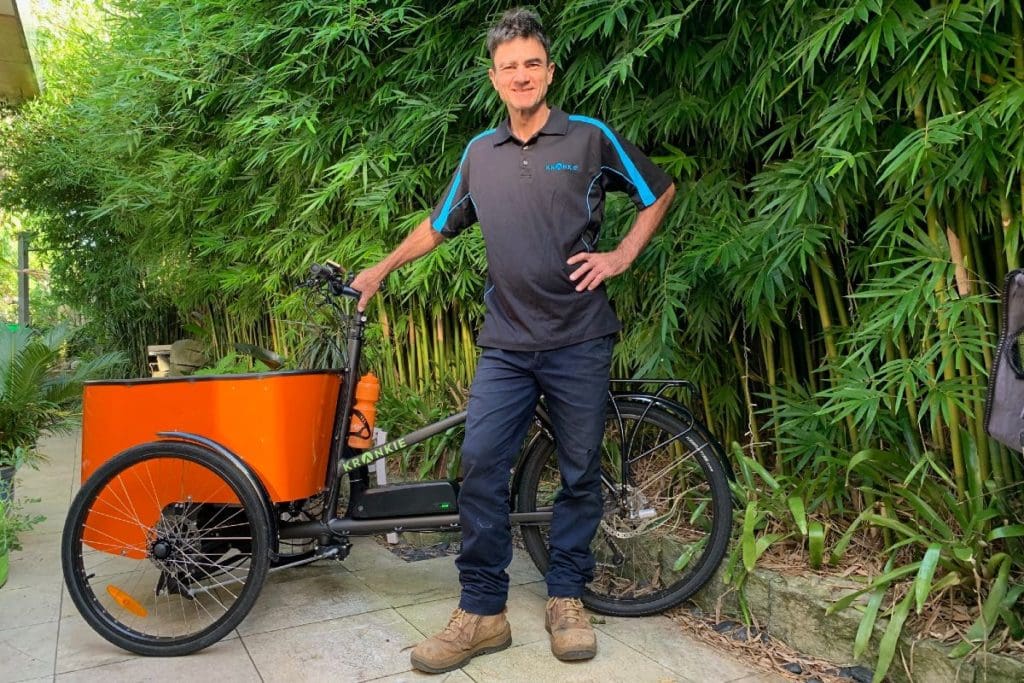Made in Australia – Krankie Cargo Tricycles
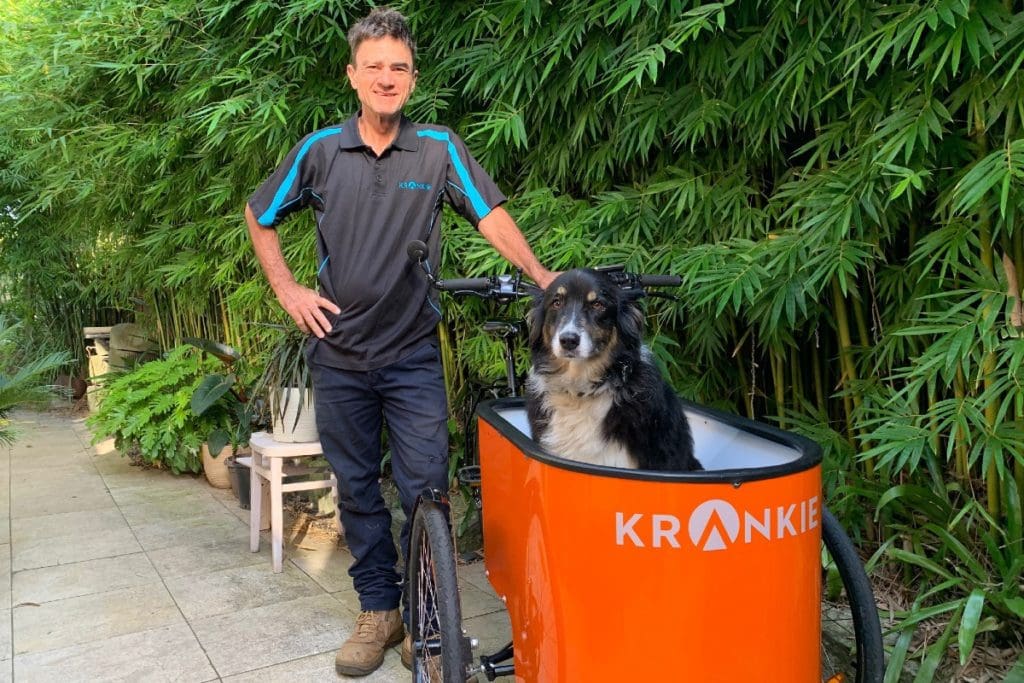
Sydney / NSW
On an unassuming suburban house block, located about 10 kilometres south-west of Sydney’s city centre, Andrew Graf is manufacturing possibly the most complex bikes ever to be made in Australia.
Krankie Cargo Bikes are tilting tricycles. A test ride around the local streets soon revealed that we’re not just talking about a few degrees of tilt. You can lay this machine over into a corner and whiz around it just like you’re riding a regular bike. The key difference is that you can do this with two kids in the cabin, in front of you where you can see them at all times and easily have a conversation.
This handling doesn’t just happen by accident. There are a lot of linkages that have to be precisely made and geometric design calculations that have to be correct in order for this to work.
Fortunately, Andrew has been happy to put in the years of effort required to design his bike and his manufacturing business, from the ground up.
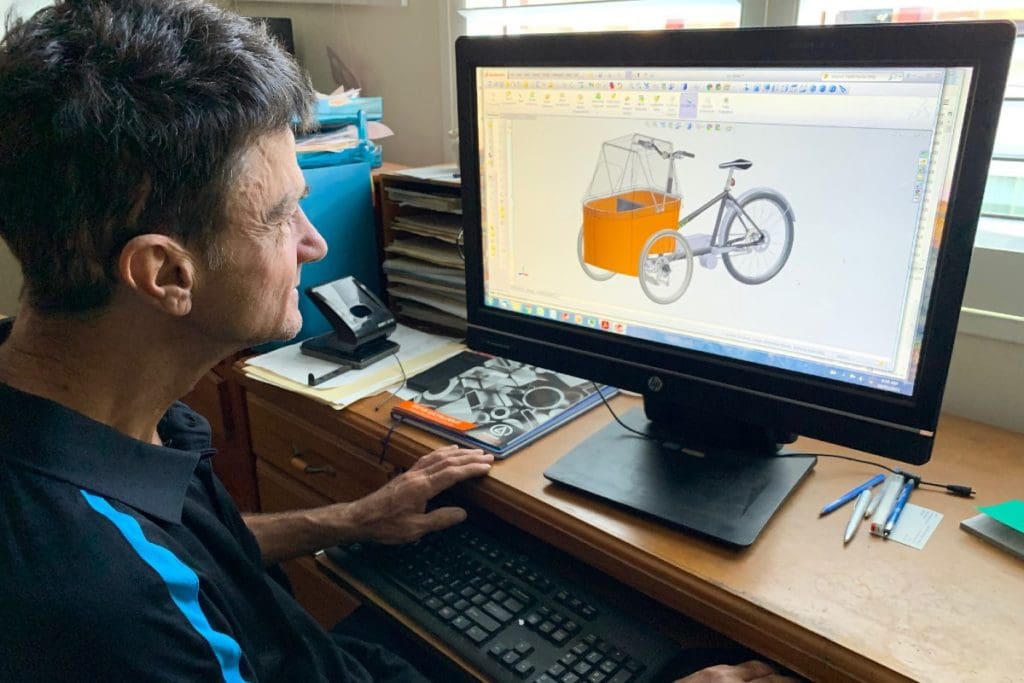
Happy is the theme behind his brand name and the way Andrew hopes his customers feel about their experiences using these bikes. Krankie is actually named after Mount Killiekrankie, which lies in a mountain range in NSW that holds fond childhood memories for Andrew. As his website explains, ‘Embarking on this development journey was about rediscovering that youthful joy and using this as a guide for the rider experience.’
After a short, but enlightening test ride, came a tour of the ‘factory’ which is housed in three sheds in the side and back yards of Andrew’s house.
One was used for storage of the components and main frame sections that are imported from Taiwan. One was used for welding and drilling and the third for fabrication and assembly. Although it was not exactly the largest bike manufacturing operation I’ve seen, just looking at the array of small, precisely made jigs that Andrew has designed and made himself, I could see that a lot of time, thought and expertise has gone into bringing this dream to fruition.

Later, I asked Andrew to share his story:
What was your motivation for starting Krankie?
It came at a period of my life when I was looking to do something on my own. I had an application for cargo bikes. I looked into what was available and was very impressed with what I saw – the range and how much of an impact they were having in Europe.
So I made it my mission to come up with my own design. I’m a passionate cyclist and saw that it was something that could contribute to society.
I could see the potential to leave the car at home and do the local trips to the shops or taking the kids to school. It was just a more enjoyable and efficient way to get around.
I thought there was an opportunity (for Australian manufacture). They’re an expensive thing to ship because they take up a lot of space in a shipping container. So the European ones are quite expensive here.
Where did you learn the skills to tackle the manufacture of such complex products?
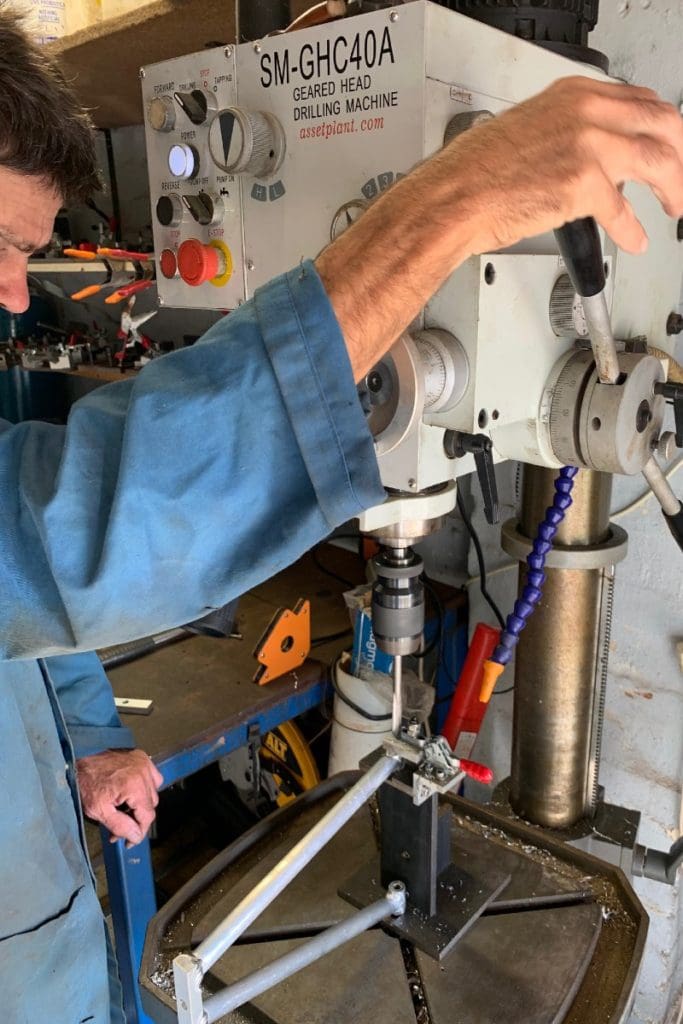
I have a mechanical engineering background. I’ve worked in a lot of fields, but for the past seven to 10 years I was involved in product, process and machine design. So I had a good grounding in how to build the whole production line – to make up the jigs and fixtures so that I could have that repeatability and cut down on my production time.
I had the skills to set up a test rig so that I could do a lot of the component testing in-house.
I transferred production of the main frame section to Taiwan. I focus on making all the parts that would have required a lot of investment to set up overseas as far as all the tooling goes. You also risk losing control of your intellectual property (by manufacturing the more complex front section overseas) so I keep that a little bit close.
So I made the decision to source the parts and main frame section from Taiwan but all the ‘smarts’, tilting, suspension – all the tricks up front to make it ride and handle well, is all made locally.
What specific bike industry-related training did you do?
I did a short frame building course, that involved brazing, at Queensland TAFE. That was a good way to kick it all off.
Why have you opted for a tilting tricycle design?
It just handles a lot better. It’s safer in corners. The ride on a fixed trike is a completely different sensation. At anything above 25 kilometres per hour they become a bit twitchy.
You get that nice free flowing bicycle feel when you ride a tilting trike.
My initial application required carrying a heavy load at the front and couldn’t have been done on a bike.
I made many fixed designs and then my brother convinced me to have a go at the tilting design and after I rode it the first time I was hooked.
From there it was a matter of improving the design and working out how to manufacture the components.
How long did it take you to refine your design to the stage it’s at now?
I spent three years in a shed, from 2014. Then I started to engage with Taiwan in 2017. Then I ordered the first production run (of the main frame section) in early to mid 2018. I sold the first tilting trike in December 2018.
How long does it take you to manufacture each trike?
I do it in batches of 10, (manufacturing the front end of the trike) then when I get an order I assemble all the parts. It takes a couple of days to assemble one.
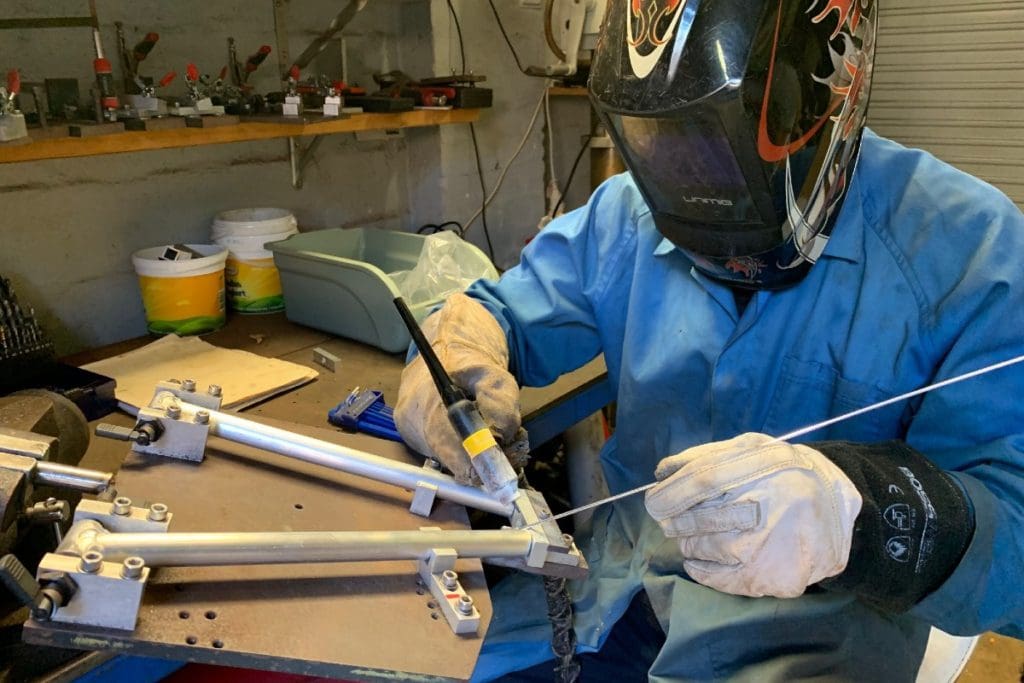
Are all of the trikes you make fitted with electric power assist?
All but two have been electric power assist. I really advise people to have a motor. You’re going to use it more. You don’t work up a sweat and you can carry loads.
What do you see as the main barriers to bike manufacturing in Australia?
The raw materials – the tubes and all the frame parts – you have to import them all. The supply chain just isn’t here. In Taiwan you have that supply chain all around you. The dropouts, cable mounts and other bits that need to be welded onto the frame.
You have to choose those high value niches and build up a critical mass of expertise in those areas.
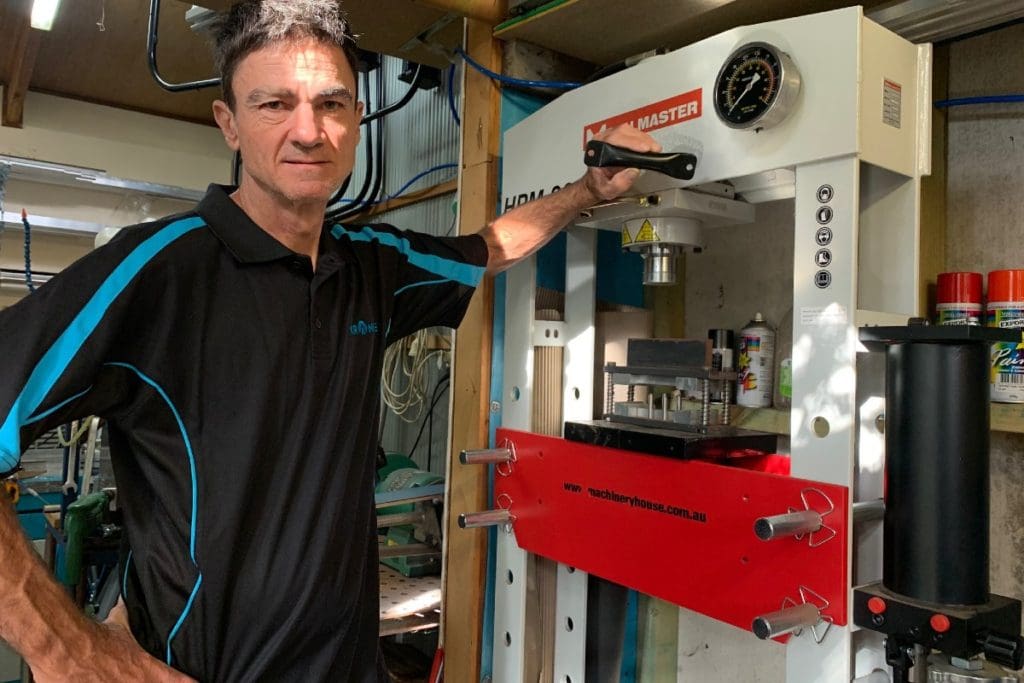
How hard is it for you to be cost-competitive against imported products of similar design?
I can be cost competitive because they’re still a niche product. I’ve got low overheads because I sell direct. I don’t have retailers. Instead I have product ambassadors in different cities who own their bikes and make them available for test rides for potential customers.
How strong is the current demand for your products?
There’s a steady increase in demand. It’s a new product, a new way of doing things. People hadn’t even heard of cargo bikes maybe five years ago but now they see them around and now it’s something people are considering more. ‘Is it the way to go for a lifestyle change?’
What do you think will be the trend for demand of your trikes in the future?
It’s an upward trend. I’m getting more enquires. More people are living in the inner city with less car ownership. There are benefits of connecting with the community, they’re good for the environment, they’re easier to park. I think as more people see others using them and see that they’re a more relaxing way of doing things, there are a lot of positives.
What price range do your trikes cover?
At the moment $5,100 to $7,500. The electric model base price is $6,300. I’m keen to reduce the barriers to people. The European tilting trikes are up to around $12,000 to $13,000, but they’ve got some nice equipment options for that price.
Krankie is certainly not going to be a commercial threat to any of the major bike brands. Andrew’s hand made process and the bike’s complexity, not to mentions the modest size of his sheds, means that he can only make them in very small quantities. But it’s nice to see that something of this level of complexity and refinement can be successfully made right in our own back yard.
You can see more details about Krankie Cargo Bikes at www.krankie.com.au
